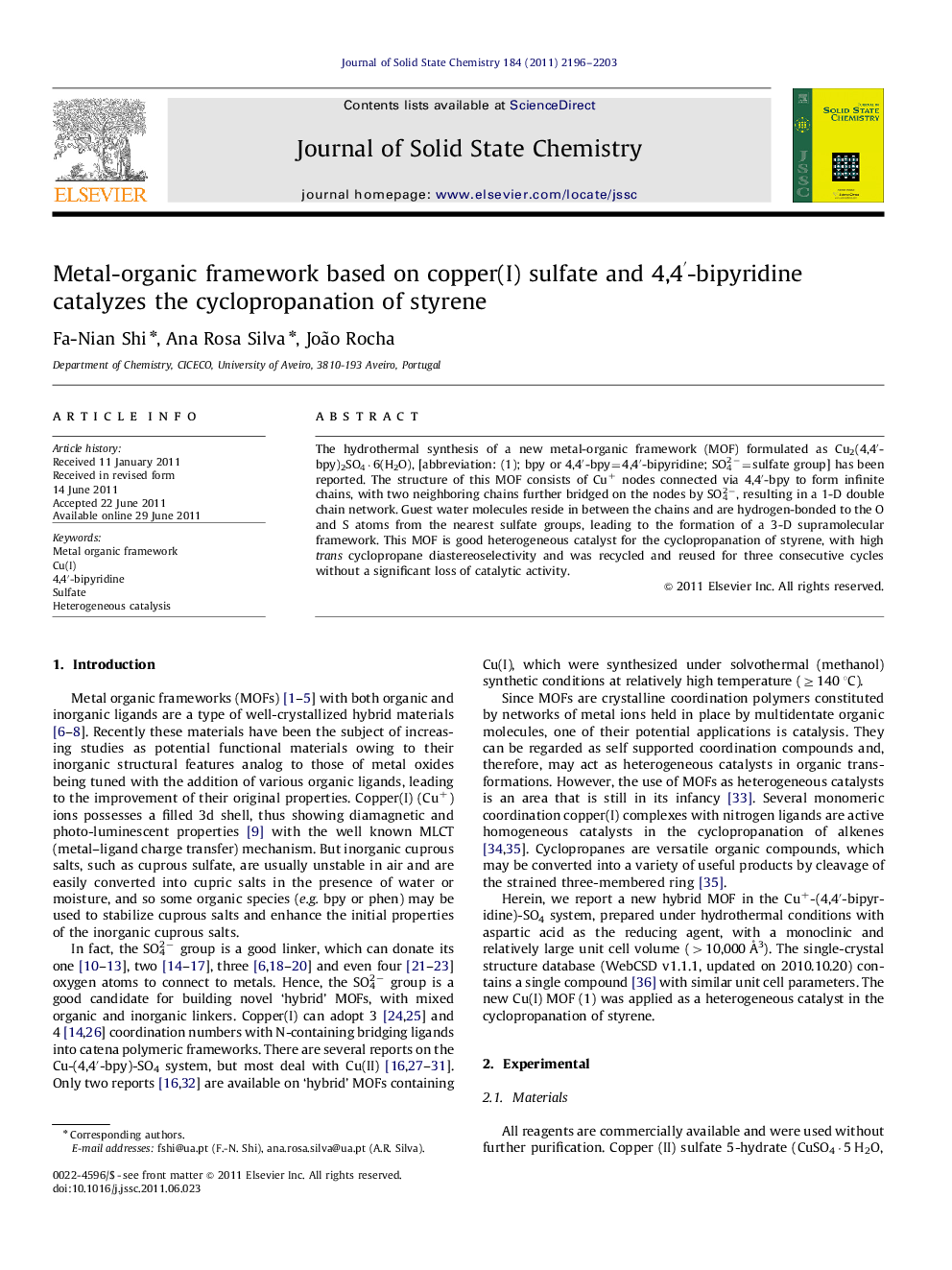| Article ID | Journal | Published Year | Pages | File Type |
|---|---|---|---|---|
| 1330717 | Journal of Solid State Chemistry | 2011 | 8 Pages |
The hydrothermal synthesis of a new metal-organic framework (MOF) formulated as Cu2(4,4′-bpy)2SO4·6(H2O), [abbreviation: (1); bpy or 4,4′-bpy=4,4′-bipyridine; SO42−=sulfate group] has been reported. The structure of this MOF consists of Cu+ nodes connected via 4,4′-bpy to form infinite chains, with two neighboring chains further bridged on the nodes by SO42−, resulting in a 1-D double chain network. Guest water molecules reside in between the chains and are hydrogen-bonded to the O and S atoms from the nearest sulfate groups, leading to the formation of a 3-D supramolecular framework. This MOF is good heterogeneous catalyst for the cyclopropanation of styrene, with high trans cyclopropane diastereoselectivity and was recycled and reused for three consecutive cycles without a significant loss of catalytic activity.
Graphical AbstractA new MOF structure built up of 4,4′-bipyridine, sulphate and Cu(I), is an active heterogeneous catalyst for cyclopropanation of styrene with ethyldiazoacetate.Figure optionsDownload full-size imageDownload as PowerPoint slideHighlights► The synthesis is different from solvothermal synthesis for other Cu(I) compounds. ► The compound and the structure are new. ► H bonds form infinite planes among water molecules and sulphate species. ► H bonding interaction makes the structure into a 3D supramolecular framework. ► Active catalytic property as heterogeneous catalyst for cyclopropanation of styrene.
